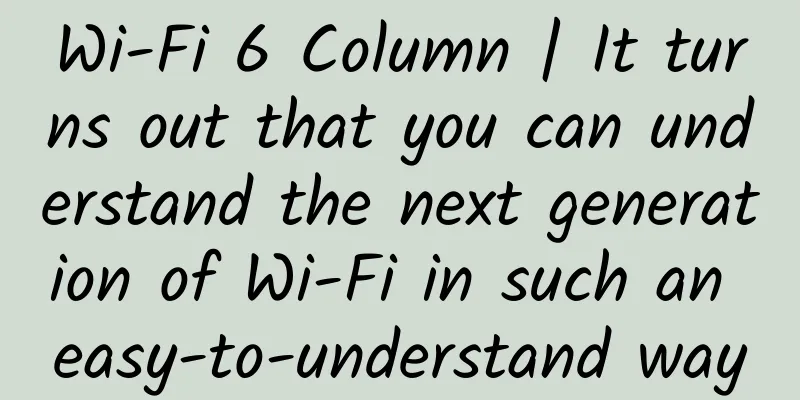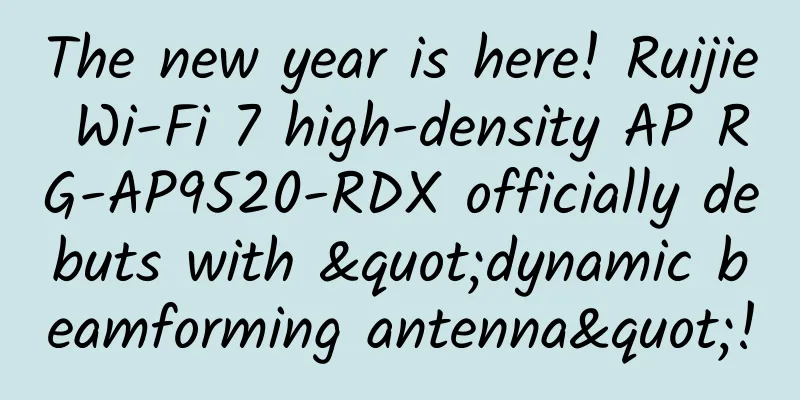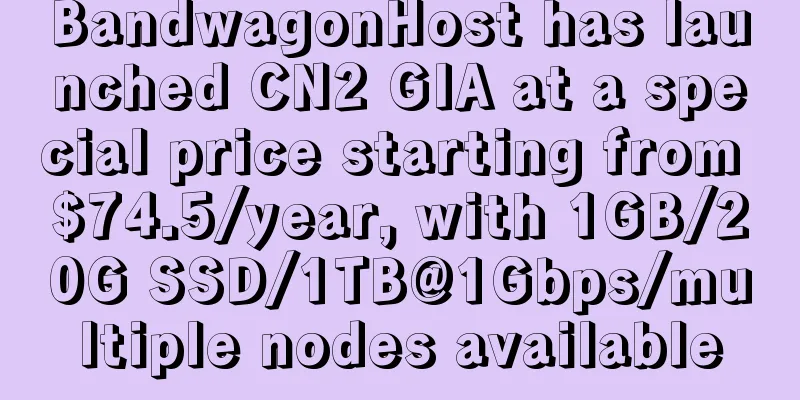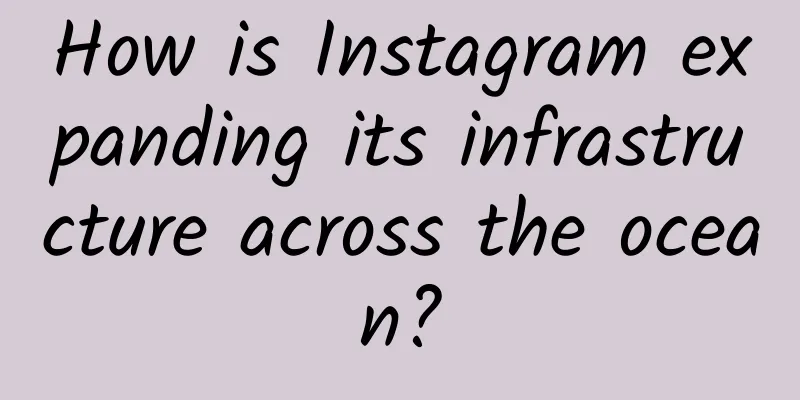Li-Fi, which failed to beat WiFi, may be the savior of 5G
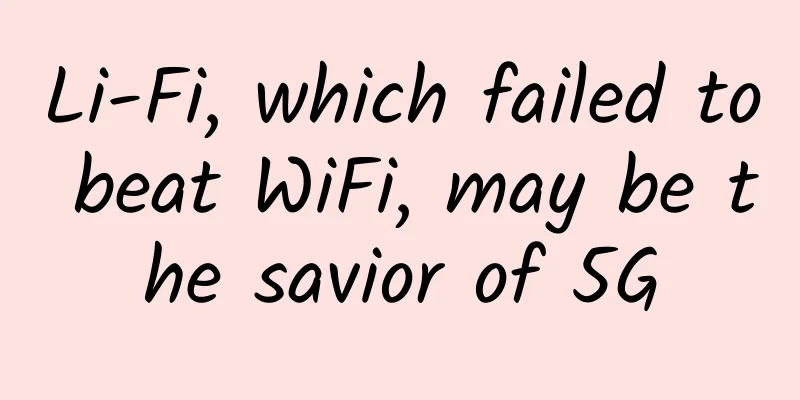
|
Regarding the technical solutions for future communications, some people think that it is enough to connect all the smart terminals in the house to 5G, while others think that WiFi will still be the "king" in terms of cost-effectiveness. Since each communication method has its own advantages and disadvantages, it is also possible to have a bigger imagination, such as using a light bulb to surf the Internet, which is also very exciting. I am not exaggerating. In 2011, after Harald Hass, a professor at Edinburgh University in the UK, gave a speech on using LED light sources to transmit data wirelessly, the new term Li-Fi (light fidelity) was seen as a technological alternative to WiFi.
However, this technology is too advanced and unstable, which has led to it only remaining in laboratories and in the marketing rhetoric of some LED manufacturers. Compared with the overwhelming momentum of 5G, Li-Fi, which was also regarded as a "WiFi disruptor", is still a thing of interest to niche geeks, and its development trend is embarrassing. Does it really have the ability and necessity to replace WiFi and enter our living space? What "unspoken rules" of technological iteration are reflected by the different trends of Li-Fi and 5G technology? What is so special about Li-Fi, which has been highly anticipated for connecting to the Internet through light bulbs?The news that the US company LightPointe announced the establishment of a new company to research (visible light wireless communication) technology has brought Li-Fi back into people's vision. As the name suggests, Li-Fi uses visible light for wireless data transmission, and some people call it "light fidelity technology." Its working principle is simply to use visible light such as LED lights as the emission source of the information transmission system, implant a chip to form a network access point similar to a WiFi hotspot, control the light source to send high-speed signals, and thus control the network transmission of the terminal receiver. As long as there is light, you can access the Internet. Doesn't it sound much better than WiFi and 4/5G? The latter not only requires huge capital for infrastructure construction, but also always has problems such as disconnection and radiation. Li-Fi is different. You can connect to the Internet by turning on the light tube indoors. You can still download movies at high speed while standing under the street light at night. It is also absolutely green, low-carbon and pollution-free. Unfortunately, when something seems too good to be true, it probably isn’t. That’s exactly what Li-Fi is. Unlike 5G, which has been developing step by step, the development of Li-Fi over the past decade can be described as difficult. The creator of this technology, Herald Haas, spent several years developing LiFi technology to the third generation, which enabled it to break away from the conceptual level and become a real product. The performance of the third generation "LiFi-X" has been greatly improved, such as smaller size, transmission rate of 40Mbps, and can receive side and back light sources, which greatly improves the network effect. Sounds good? But this is obviously no longer on the same application plane as the commercial wave of 5G for all. Interestingly, when Haas proposed the Li-Fi signal chip solution, many smartphone mobile manufacturers were still researching 5G standards. In other words, at the time, the industry had a similar attitude towards Li-Fi and 5G, which was to be cautious and optimistic, hoping to deploy after the technology was verified. A big competition between emerging communication technologies? Let’s start with the inherent shortcomings of WiFiAlthough the technical principles of Li-Fi seem a bit incredible now, its existence is reasonable. At that time, the rationality of Li-Fi was given by the natural defects of WiFi. As we all know, WiFi has played a very important role in mobile communications. Today, we can access the Internet anywhere within the coverage area, including coffee shops and KFC. But the biggest problem with WiFi is that, on the one hand, the signal coverage is small, and the strength varies significantly, making communication transmission unstable. When the network speed changes, loss of connection, game disconnection, video freeze, etc. are all common frustrating scenes. In addition, the security risks of WiFi have also triggered unprecedented doubts. The transmission signals of radio waves can be easily hijacked by hackers, thus completely exposing user information. I believe that many people have had the unpleasant experience of connecting to unsafe WiFi and causing information leakage, or their own WiFi accounts have been shared and stolen inexplicably. This is more likely to cause concern in the early stage of the explosion of smart terminals. Because when multiple terminals and multiple users access WiFi at the same time, in addition to the speed drop, when your smart door locks, health bracelets, camera treadmills, etc. are all connected in series under the same WiFi system, once a single hardware vulnerability is breached, the chain risks it brings may be unimaginable before. Finding and developing new communication technologies has been a topic of interest for engineers since a very early time. At that time, Li-Fi and 5G appeared on researchers' desks at the same time. First of all, both have a great advantage over WiFi in terms of transmission rate. The planned speed of 5G is 10Gbps, which will be further improved after commercial use. The throughput of Li-Fi is also far higher than WiFi. At that time, the small micro LED released by pureLi-Fi could transmit at a speed of 8 Gbps, and theoretically it could reach 200+Gbps, which seems to be no problem to support hundreds of millions of IoT devices. At the same time, the security of both is obvious to all. 5G communication will authenticate users and can effectively ensure the security of user information. Li-Fi uses the characteristics of visible light for transmission, so it cannot penetrate the wall, and the wave-particle duality of light determines that it is difficult to be stolen, so it is almost impossible for information in the building to be leaked. More importantly, unlike 5G, which requires large-scale investment in building a large number of communication base stations, Li-Fi requires almost no high operating costs. It only requires replacing the city’s visible light sources with LEDs with transmission chips. Obviously, some special chemical reactions occurred in the technological changes that replaced WiFi, which led to the elimination of Li-Fi today. Three major nodes explain the elimination of Li-Fi and the rise of 5GThe business world is sometimes very metaphysical. There is no fixed method for the advancement of a new technology. There are no absolute rules in itself. It often depends on certain coincidences or special conditions to be established. This is aptly demonstrated by looking at the development history of Li-Fi and 5G. Theoretically speaking, Li-Fi has certain technical and application advantages over both WiFi and 5G. Why did it fail to have a significant impact on both? 1. The technological tipping point has not yet appeared. To replace a mature technology, the replacement technology must have higher industrial value. WiFi is almost everywhere, and it is constantly improving with the increase of bandwidth. If Li-Fi wants to become its replacement, it still has a long way to go in terms of technical stability.
As Jack Gold, president of mobile consulting firm J.Gold Associates, questioned, "Visible light communications have been tried for several years. It's not new. Getting super-large bandwidth is not as simple as it sounds." The technical difficulties include reverse transmission. How the Li-Fi terminal device reflects the signal to the LED lamp requires the support of professional integrated chips, which is still in the early stages of research. The second is the transmission distance. It is necessary to deploy LED light sources without dead ends in the use scenario to ensure the Li-Fi network, while minimizing the learning and adaptation costs. Obviously, continuous polishing of engineering solutions is also required. The third is signal interference. Although Li-Fi signals are not as easy to be hijacked as WiFi, they are very susceptible to interference. Not only can they not penetrate walls, but if there is an obstruction between the terminal and the light source, the signal will be cut off. Unless you play with your mobile phone with an LED searchlight on your head, the occasional disconnection may drive a large group of "people who will die if they don't go online" crazy. 2. Focus of industrial collaboration. Compared with the impact of 5G on communications, semiconductors, terminal hardware and software, Li-Fi has a longer industry chain, involving many fields such as lighting and electricity. However, these fields lack the right to speak and the power to guide cutting-edge communication technologies. This has led to a lack of sufficient industry support for the integrated chips, industry standards, terminal development, etc. required by Li-Fi, despite the fact that LED manufacturers are very active in promoting Li-Fi.
Although Cisco and EMC (a provider of energy control and IoT solutions) have expressed interest in Li-Fi technology, and some companies have begun testing Li-Fi, they are still only in the exploratory stage and have not made any important commercial decisions. The lack of upstream and downstream collaboration in the industry chain is in stark contrast to the rapid industrialization of 5G driven by communications and AI giants. 3. Challenges in the terminal niche market. Even if Li-Fi achieves its promise of real throughput and scale, and builds a series of industrial ecosystems of communication + lighting + electricity, its endpoint devices will inevitably fail if they cannot enter the market and be chosen by the majority of consumers. We know that mobile smart terminals have entered the stage of integrated and miniaturized design. For example, the Kirin 990 launched by Huawei not long ago is a SOC chip with integrated 5G functions. However, the current Li-Fi system can only appear in the form of a prototype, which is huge and cannot be deployed in various small and micro terminals. The strengths of "light" cannot make up for the weaknesses of "communication", which further widens the distance between Li-Fi and the mass market.
At present, the more likely fate of Li-Fi is to appear as a supplement to 5G in places with high security requirements, such as places where WiFi signals are easily interrupted or missing, or where radio communications are not allowed (such as radio telescopes, nuclear power plants, etc.), to help achieve more stable and high-speed communication. And because there is no spectrum restriction, Li-Fi will also provide the next technical outlet for crowded 5G. Although its future is still far away, in these niche test sites, Li-Fi technology itself can also be gradually iterated, looking for its own killer application. After all, the development of science and technology is like this, that is, to find the most valuable option among countless impossible trials and errors. |
<<: Huawei Mate X: The Future of the Future
>>: Review of 5G in 2019: 5G sounded the rally call for commercial use
Recommend
The reality of "5G + Industrial Internet" still exists: people don't know how to use it, don't dare to use it, and can't afford it
"Industrial Internet" has been written ...
How managed services can make the most of IoT
IoT products are everywhere—or at least they will...
What new developments have occurred in the 5G field in the first half of 2022?
On June 6, 2022, as 5G licenses were issued for t...
DiyVM: US CN2/Hong Kong CN2 VPS monthly payment starts from 50 yuan, Hong Kong independent server starts from 499 yuan/month
DiyVM is a Chinese hosting company founded in 200...
The road is wide and the traffic is fast! The three major operators help IPTV to have a new spring
Since last year, IPTV has enjoyed a resurgence. T...
WiFi 7 is here. What are the improvements compared to WiFi 6?
WiFi 7 has become one of the hottest topics, espe...
Promoting the comprehensive upgrade of SASE services, the front line of Internet technology is catching up with the era of cloud and network security integration
As digital transformation progresses and cloud-ne...
From January to May, my country's telecommunications business revenue totaled 612.7 billion yuan, a year-on-year increase of 6.7%.
[[407105]] On June 23, according to the "Eco...
Wi-Fi 6 Development Status and Future Application Trends
Connections are given more profound value in the ...
RAKsmart: Korean server/Japanese server starting from $59/month, 50-300M mainland optimized bandwidth
RAKsmart's October promotion has begun, and a...
Differences between fat AP and thin AP, advantages and disadvantages of networking
1. What is AP? How to distinguish fat and thin AP...
Say goodbye to being trapped by walls: three magic tools to make your home WiFi full of
"What's going on! The Internet speed is ...
HostSlick: €37/year KVM-2 cores/2GB/240G SSD/15TB@10Gbps/Netherlands VPS
HostSlick has launched a Christmas/New Year's...
The three major operators delisted from the US and returned to the A-share market
Recently, China Mobile issued an announcement sta...
Slow internet speed, lagging video conferences, these are the pain points of Wi-Fi for small and micro businesses. How to solve them?
Currently, online video conferencing has become a...
